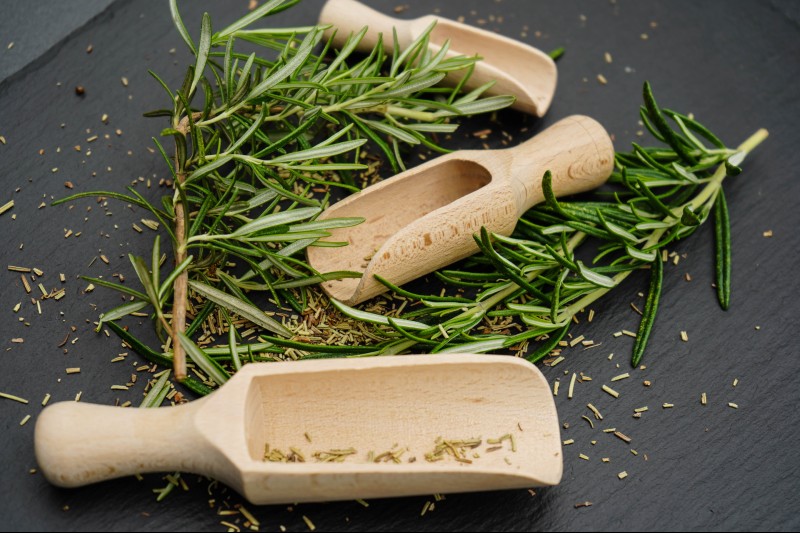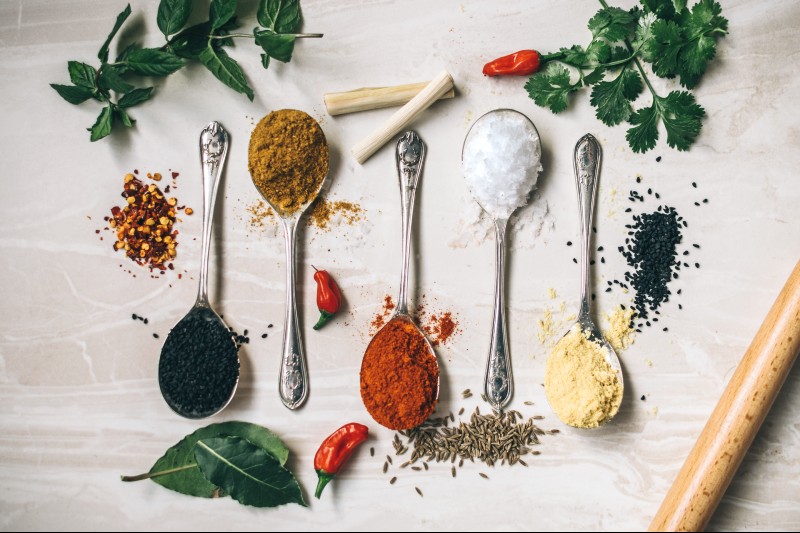We’ve said it before and we’ll continue to say it; butter is amazing. The flavor is superb and adds a certain creamy texture to food. It’s perfect as an ingredient but it’s also perfect as a finishing sauce. Some great pan sauces come from the meat drippings, a little white wine, herbs, and some cubes of ice-cold butter.
With this fresh herb sauce recipe, the possibilities are pretty much endless. You can create so many variations with so many different herbs. Technically, this sauce could be considered to be a lemon herb sauce but you can also substitute fresh lemon with lime juice for an even deeper complexity; maybe add some cilantro for a Mexican-inspired sauce. Make a garlic herb sauce for chicken or if you’re a fan of lamb, you can create a mint butter sauce for those lamb lollipops.
Related Guides
- How to Make Soubise
- A Guide to The Five Mother Sauces of Classical Cuisine
- French Cuisine Guide
- Food Recipes
How To Use Herbs in Cooking

When working with herbs, it’s good to know the difference between fresh herbs versus dried herbs. When using dried herbs, the flavor is more concentrated and can be overpowering. Dried herbs should be added to the cooking process as early as possible so the flavors have time to develop. When using fresh herbs, they should be added as close to the end of the cooking process as possible. Fresh herbs are delicate and not as overpowering as their dried counterparts. You will achieve an almost delicate and subtle flavor using fresh herbs such as this lemon and herb sauce.
The general rule of thumb when trying to determine the ratio of herbs is one tablespoon of fresh herbs vs one teaspoon of dried herbs. This ratio can obviously be worked backward as well. Of course, we prefer fresh herbs over dried herbs any day but sometimes location, seasons, and availability do not always allow for fresh herbs to be used.
Herb Sauce Variations
As with any sauce, you can change it up to make variations. These variations will depend on the dish you are preparing.
- Beurre Blanc –for the classic Beurre Blanc Butter sauce, just omit the herbs.
- Beurre Rouge – instead of using white wine and white wine vinegar for red wine and red wine vinegar. it will still pair well with meat, seafood, and vegetables but goes great with fish.
- Try fresh parsley, fresh thyme, and fresh oregano with a dash of red pepper flakes.
- Try fresh garlic and a mix of fresh herbs, maybe add in a bit of Parmesan cheese.
Herbed Butter Sauce Recipe

Ingredients
- 8 ounces of white wine
- 1.5 ounces of white wine vinegar
- 1 ounce of shallots, chopped
- 1 pound cold unsalted butter, cut into cubes
- 2 tablespoons finely chopped basil
- 2 tablespoons finely chopped fresh chervil leaves
- 2 tablespoons finely chopped fresh chives
- Salt to taste
- freshly ground black pepper to taste
- Lemon wedges
Method
- Place the wine, vinegar, and shallots in a saucepan on medium heat. Reduce until about 1 ounce of liquid is left.
- Add the cubed butter to the hot liquid. Set pan over medium-high heat and whisk. When the butter is melted and begins to incorporate, remove from heat and continue to whip until the sauce becomes smooth and shiny.
- Add herbs. Adjust seasoning and add salt and pepper to taste.
The sauce should be kept warm and not hot. You may need to whisk the sauce every now and then so it keeps its consistency.
Tips and Tricks
- Make sure the butter is hard and cold. If you use soft butter, it will be more difficult to achieve an emulsion.
- Add heavy cream to the sauce which will help stabilize it further.
- Add lemon juice at the finished stage so that it gives the sauce a deeper flavor.
- You can use lemon juice in place of the white wine for alcohol-free and a more citrus-flavored sauce.
- If you see that the sauce is beginning to bubble or break, reduce heat or remove it altogether. The carry-over heat will still allow the butter to melt.



